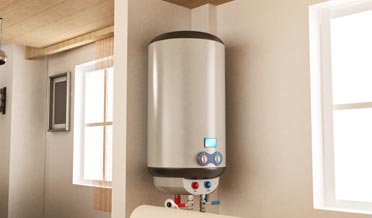Tankless Water Heaters 101
Tankless Water Heater: Installation Cost, Maintenance & Money Savings
What a difference 100 years make in the innovations found in American homes! In 1923, fewer than 50% of American homes had electricity, flushing toilets, and showers. Twenty years earlier, these services were rare luxuries installed in only the poshest of homes. We have come a long way in a short time and each generation of innovation is more comfortable and more efficient.
The new generation of water heaters is leading to some interesting choices for homeowners. Most homes still use a traditional tanked water heater in a mechanical space or basement. Tankless water heaters offer some convenient options, including:
- They provide an endless supply of hot water upon demand—that is, hot water is available at the faucet without waiting for the cool water from the last usage to clear the line.
- Tankless systems do not require space for 40 or 50 gallons of water to be stored.
- Since a large amount of water is not being stored and kept hot, tankless systems can save significant energy.
No innovation fits every setting, so let’s compare the options and see which meets your needs.
Tankless Water Heaters Efficiency Basics
Both traditional tanked water heaters and tankless systems have electric and gas-powered options; some options are more energy-efficient than others.
- Traditional tank gas-powered water heaters capture approximately 67 to 70% of the energy available in natural gas or propane.
- Traditional tank electric water heaters capture 100% of the energy in electricity. However, a small percentage of this energy is lost while idle and not in use.
- Gas tankless heaters have an efficiency rating of 92 to 95% and lose very little energy since only 2 gallons of water are being stored.
- Electric tankless systems use 100% electric energy and lose very little energy since only 2 gallons of water are being stored.
- Hybrid electric tankless systems can be 200% energy efficient because a heat pump pulls energy from indoor spaces to heat the water.
Not every home has natural gas or propane available. Not every home can be retrofitted for tankless systems.
Tankless Water Heaters Installation Basics
As with any innovation, installation during new construction allows planning for space, utility chases, and convenient placement. Post-construction is a possibility but may come with a hefty price tag.
- Gas-powered traditional tanks require a little more space to accommodate access to gas, water supply, and a vent for exhaust. Most homes can be serviced with a water heater housed in a basement, garage, or mechanical closet.
- Electric traditional tanks require room for water supply only; electrical connection does not generally add space requirement. Most homes can be serviced with a water heater housed in a basement, garage, or mechanical closet.
- Most homes will require at least two gas-powered tankless water heaters, to keep hot water close to bathrooms, kitchens, and laundry rooms. These water heaters are small, approximately 9”x 20” x 25”, so they can be found under a vanity, in a cabinet, or a small alcove. Each tankless heater will require access to water, electricity, gas, and an exhaust vent. They will need to remain accessible for maintenance and repair.
- Most homes will require at least two electric tankless water heaters to keep hot water close to bathrooms, kitchens, and laundry rooms. These water heaters are small, approximately 9” x 20” x 20”: they will also fit under a vanity, in a cabinet, or a small alcove. Electric tankless heaters only require access to water and electricity, but they must be accessible for maintenance and repair.
Let us install your Tankless Water Heaters
Let Doctor Cool help with your Tankless Water Heaters questions before buying your home. Call Doctor Cool & Professor Heat today at 281-338-8751 or email Doctor Cool and let our professional Residential Plumber Contractors assist with all of your Tankless Water Heaters questions.
